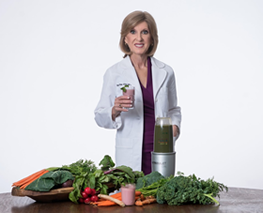In my #1 BestSelling book, Prescription Detox: How Our Allegiance to Big Pharma Makes Us Sicker and How You Can Heal Without Meds, I wrote at length on the toxicity problems caused by contamination with pesticides and solvent residues, as well as from the toxicity of prescription medications. However, I didn’t specifically discuss unnecessary toxicity to people who choose to use marijuana. In this article, with the assistance of Dr. Joseph Pizzorno, I hope to shed some light on risks of cannabis use, other than from its psychoactive properties.
With several states allowing medicinal use of marijuana and a growing number decriminalizing recreational use, many people are now using this herbal drug. It is estimated that approximately 43% of U.S. adults have tried marijuana, with 13% using it regularly.
The major health problems caused by marijuana appear to be bronchial irritation, decreased motivation, learning difficulties, and injuries. However, less well appreciated are the toxicity problems caused by contamination with pesticides and solvent residues.
It’s bad enough that may of us are unintentionally exposing ourselves to neurotoxic organophosphate pesticides, endocrine disrupting polychlorinated biphenyls (PCBs), insulin receptor site-blocking phthalates, or lung-damaging mold from damp buildings. However, according to Dr. Joseph Pizzorno, author of “The Toxin Solution,” countless people are intentionally consuming known toxins such as alcohol and marijuana and are unlikely to realize that at modest dosages, salt, high-fructose corn syrup, phosphates, and nonsteroidal anti-inflammatory drugs (NSAIDs, e.g. Alieve, Ibuprofen) are toxic as well. This huge load of environmental, endogenous, and choice toxins add up to deplete stores of protective glutathione and cause physiological and structural damage in many ways.
Toxicity of Cannabis:
Cannabis production has become a multibillion dollar industry in the U.S. The federal illegality of Cannabis has resulted in not only limited clinical research but also a production environment with few standards and very little regulation. Because most cannabis is grown indoors, heavy use of agricultural chemicals is common, and thus toxicity can be due to not only constituents of marijuana itself, but also contaminants such as solvents, pesticides, and heavy metals with most extracts adding solvent residues. This likely helps explain some of the discrepancies in the research (1).
According to Dr. Pizzorno, almost 500 compounds have been extracted from Cannabis, of which 65 are classified as cannabinoids. Tetrahydrocannabinol (THC) is the most psychoactive component of cannabis and alters cognition primarily through the activation of cannabinoid (CB), receptors on presynaptic axons. The content of THC in marijuana has increased from 3.1% in 1992 to 5.1% in 2002 (1).
When not used to excess, THC itself has low toxicity and modest use has shown minimal long-term physical or psychological effects, while acute high dose intoxication occurs quickly but is short-term. Nausea, anxiety, paranoia, short-term memory loss, confusion and disorientation are typical symptoms of intoxication (1).
Gonadal function is impaired by THC by blocking gonadoropin-releasing hormone (GnRH) release, and results in lower levels of lutenizing hormone (LH) and follicle-stimulating hormone (FSH), which causes reduced testosterone production by the testicular Leydig cells (1).
Toxicity research of whole plant marijuana is inconsistent, likely due to lack of control for contaminants, and a multitude of other reasons. The toxicity of marijuana is significantly affected by the method of use. Inhalation of the smoke of the dried plant is the most common way of usage and results in higher risk for adverse effects. There are many hazardous compounds in the whole-plant smoke, including ammonia, cyanide, heavy metals, carbon monoxide, mutagens, carcinogens, and polycyclic aromatic hydrocarbons. Surprisingly, the tar from a Cannabis cigarette contains higher concentrations of carcinogens, such as benzanthracenes and benzopyrenes than does tobacco smoke (1).
Pesticides in Cannabis:
The majority of marijuana produced in the U.S. was grown outdoors for most of the 20th century, but moved inside with more aggressive law enforcement. Thus this required the use of agricultural chemicals, typically synthetic fertilizers and pesticides. And because Cannabis cultivation is illegal, there are no pesticides registered for use on Cannabis in the U.S., which is why there is little research on their use for this purpose. This limited research suggests that this results in higher chemical residue levels. Toxic contaminants found in both medical and recreational cultivated marijuana include pesticides, fungicides, growth regulator and mosquito repellant (1).
Solvents and Heavy Metals in Cannabis:
Many of the solvents used to concentrate the active constituents in Cannabis pose a significant risk of toxic chemical concentration and are neurotoxic and are potential carcinogens. Cannabis has been shown to be especially effective in absorbing metals, e.g. cadmium and copper from contaminated soils. Cannabis is also intentionally contaminated with metals to increase the market weight, to make matters worse. In Germany, in 2008, 150 people developed lead poisoning as the result of using adulterated cannabis (1).
Because of growing cannabis indoors, Cannabis is susceptible to contamination by microbes such as fungi, bacteria, and plant viruses, with Penicillium species, being the most predominant microbe.. Microbial contamination is also increased with the growing and drying process. Human pathogens, e.g. hepatits A, hepatitis B, and salmonella have also been contaminants found in cannabis. In those immunocompromised individuals using medicinal marijuana, chronic pulmonary asperigillosis has been found (1).
Synthetic Cannabinoids:
In the case of synthetic cannabinoids, such as “Spice,” “K2,” “herbal incense,” and others, there is limited research data, but toxicity symptoms reported include tachycardia, hypertension, tachypnea, chest pain, heart palpitations, hallucinations, racing thoughts, and seizures. Additionally, neurologic toxicity symptoms include agitation, central nervous system depression/coma, and delirium/toxic psychosis. There have even been reports of acute renal failure.. These synthetic cannabinoids appear to be significantly more toxic than cannabis and should be avoided (1).
Clinical Indications of Toxicity:
- airway obstruction
- squamous metaplasia
- impaired psyhomotor performance
- increased incidece of schizophrenia
- cancer of the mouth, jaw, tongue and lung
- leukemia in children of marijuana smoking mothers
Heavy Cannabis Use Increases Risk for :
- accidents
- dependence
- poor social outcomes
- poor mental health
- decreased motivation
- impaired ability to learn
- reduced sexual desire
- bronchial irritation
- long-term pulmonary damage
What Can You Do?
The title of this article suggests that the person using toxic cannabis has a choice, which means the dosage and toxicity are under the users control. The most effective way to decrease cannabis toxicity, is obviously by the use of “abstinence.” However, understanding the risks that are presented here should help those using cannabis to seek the least toxic forms. Treating cannabis dependence with prescription drugs has not been found to be beneficial.
The nutritional supplement, N-acetyl-cysteine (NAC) at 1200 mg twice per day has been shown to be beneficial due to its induction of glutathione synthesis, which helps mitigate many of the toxic effects and improve the odds of abstinence. Assuring proper detoxification pathways, is crucial, and thus allowing us to help you in this process would be very wise.
The preferred method of use of cannabis is via vaporization (“vapping”) of extracts, as it reduces respiratory exposure to toxic particulates and carcinogens. If smoking the dried plant (buds, leaf, flowers, etc.), the toxic chemical residue will be affected by the type of filtration. The most toxins are obtained with hand-held glass pipes, unfiltered water pipes are intermediate, and filtered water pipes allow for the lowest quantity. Many of the contaminants are made more toxic with heating (1).
References:
(1) Pizzorno, J. (2016). What Should We Tell Our Patients About Marijuana (Cannabis indica and Cannabis sativa)? Integrative Medicine, 15(6). December.







